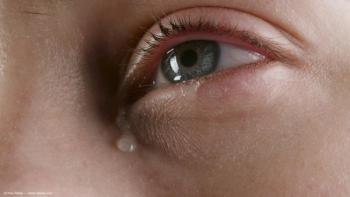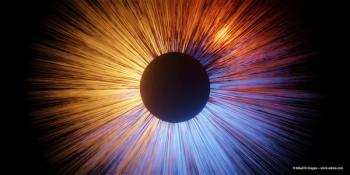
Cogan Lecture: Iron-induced oxidative damage as a potential factorin AMD
Iron overload may join several other factors as a contributor toage-related macular degeneration (AMD), suggests research beingcarried out in the lab of Joshua L. Dunaief, MD, PhD, assistantprofessor of ophthalmology, F.M. Kirby Center for MolecularOphthalmology at the Scheie Eye Institute, University ofPennsylvania, Philadelphia.
Iron overload may join several other factors as a contributor to age-related macular degeneration (AMD), suggests research being carried out in the lab of Joshua L. Dunaief, MD, PhD, assistant professor of ophthalmology, F.M. Kirby Center for Molecular Ophthalmology at the Scheie Eye Institute, University of Pennsylvania, Philadelphia.
This line of research earned Dr. Dunaief the Cogan Award, presented Tuesday night at the Association for Research in Vision and Ophthalmology. Studies in his lab and elsewhere have shown that iron is a potent generator of oxidative stress and that iron overload seems to play a role in other age-related neurodegenerative diseases. In addition, iron levels increases with age.
"The retina is no exception to this rule of increased iron accumulation with age," Dr. Dunaief said.
He and his associates have also studied double-knockout mice deficient in two iron export proteins and found that they developed retinal iron overload and retinal degeneration, symptoms similar to those of AMD.
Another finding is that iron can directly activate complement factor 5, which is part of the complement cascade involved in the development of AMD.
Will these findings strongly suggest associations between iron and AMD, more lines of investigation are open, Dr. Dunaief said. These include the study of iron transport and assessment of the role of iron regulatory proteins in AMD.
"The overall goal is to understand the mechanism of iron homeostasis in the retina and, ultimately, to see whether reducing retinal iron levels can protect against vision loss," he concluded.
The Cogan Award is presented annually in recognition of a researcher, 40 years of age or younger, who has made important and worthwhile contributions to research in ophthalmology or visual science that are directly related to disorders of the human eye or visual system, and who shows substantial promise for future research.
Newsletter
Don’t miss out—get Ophthalmology Times updates on the latest clinical advancements and expert interviews, straight to your inbox.








































